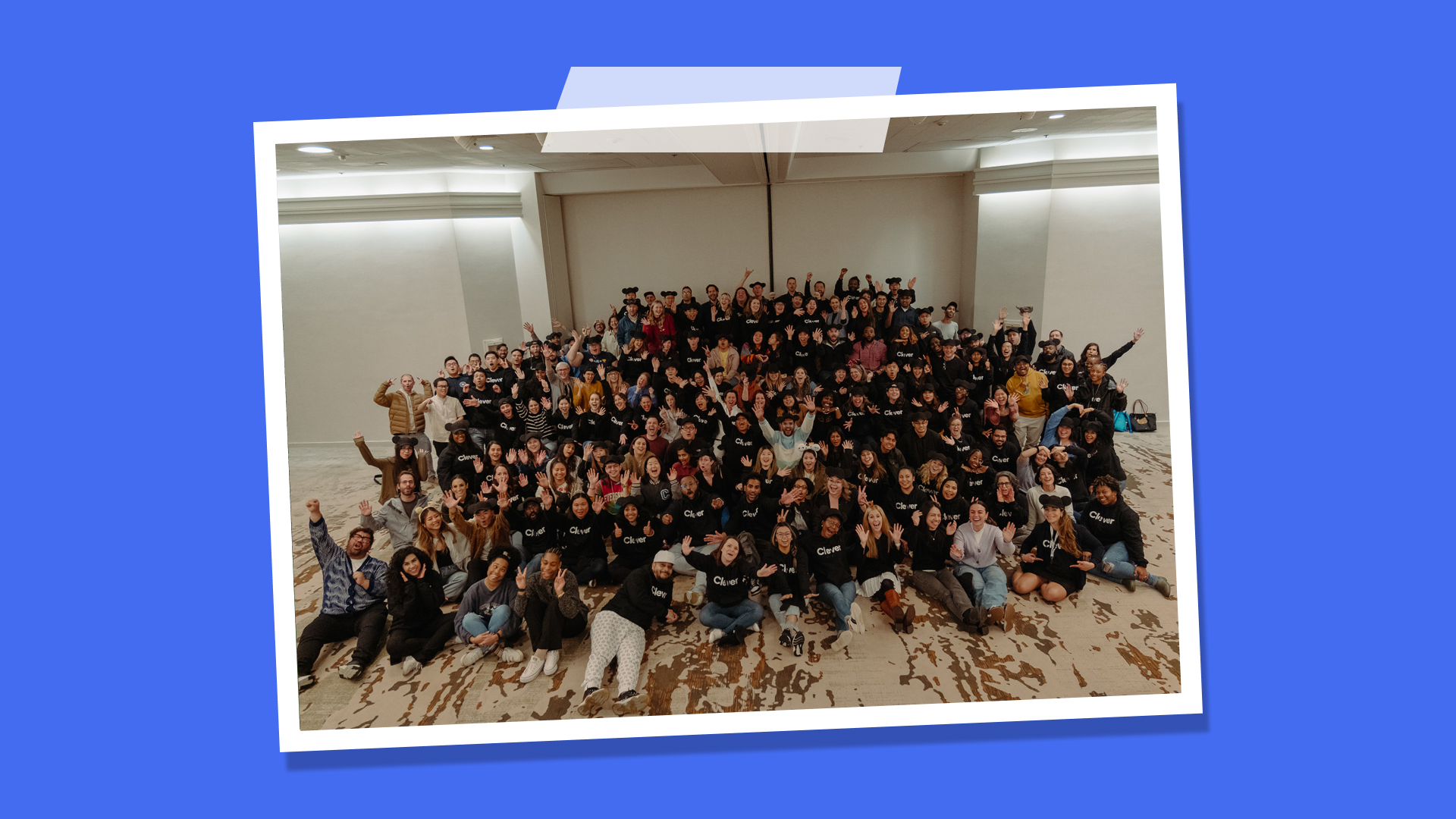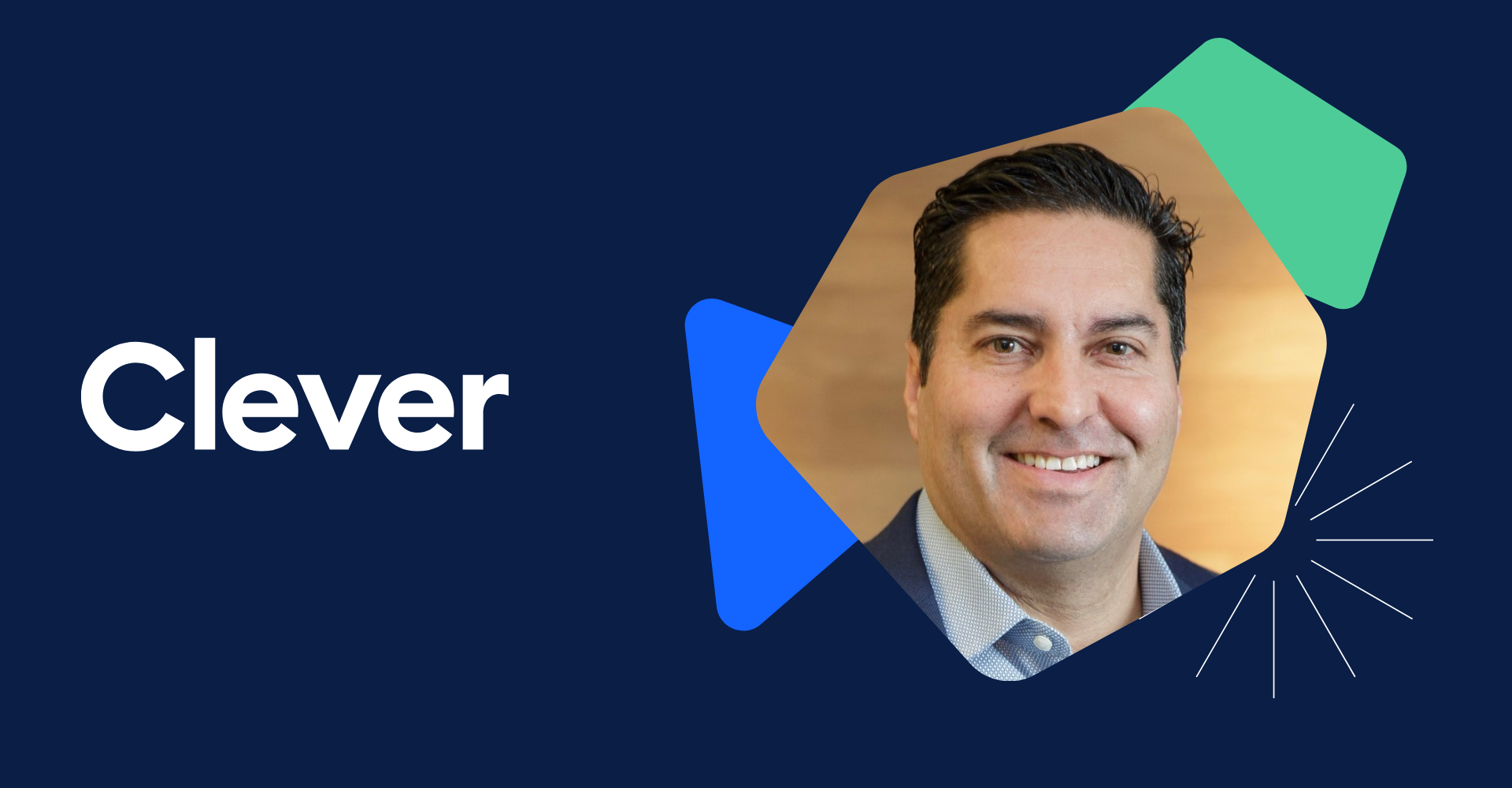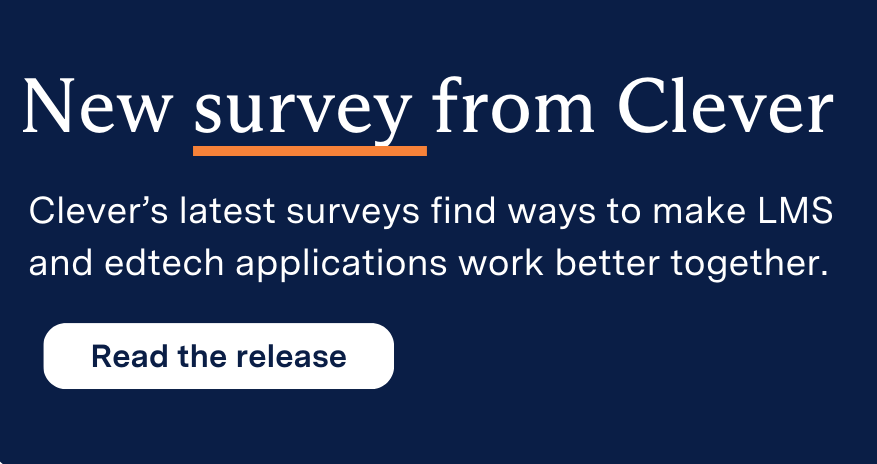Diversity Report 2024
We share an update about workforce diversity at Clever for 2024. See our Inclusion and Belonging Year in Review for 2024 for more about our efforts overall.
Since the end of 2021, we have released both an update on our overall inclusion and belonging efforts and our workforce diversity data – and we know it is important to continue this tradition of accountability as we make progress toward becoming a workforce as diverse as the schools we serve.
We find that each year is a consistent evolution as an organization on our own growth journey, and our actions reflect that. With each step, we’re committed to pushing ourselves to create an environment where every team member feels represented. This remains central to our vision for a more inclusive, fair and equitable workplace.
In this report, we’re providing an overview of our current workforce representation data to offer a transparent view of where we are today.
The data
See Clever’s annual workforce diversity report here

Where we saw progress
Overall: From 2023 to 2024, we made progress in increasing representation across several groups. Black employees rose from 15.6% of our workforce in 2023 to over 17% in 2024, while Hispanic/Latine employees increased from 10.7% to over 12%. Additionally, gender minorities in engineering—specifically women and non-binary individuals—grew from 40% in 2023 to over 42% in 2024.
Technical departments: In engineering, product, and design, we experienced gains in both gender and racial diversity. Notably, the representation of Black employees in technical roles grew from 7.1% in 2023 to 9.5% in 2024. This shift brings us closer to our goal of incorporating diverse perspectives, ensuring we build products that are more inclusive and effective for all customers.
Gender overall: In a trend that likely bucks the tech industry at large, we are proud that our workforce continues to have a significant percentage of women. In particular, our managers and executive team are mostly women led.
Where we have continued areas of opportunity
Overall: While Hispanic/Latine representation has improved, it still falls short of reflecting the fast growing Hispanic/Latine student population in U.S. public schools. While we did increase the representation of Hispanic/Latine executive leadership, we had hoped for even greater representation across departments, so this remains an area that we will continue to observe.
Management representation: There was limited change in the racial diversity of our management team from 2023 to 2024. We know that a leadership team reflecting our overall workforce is essential, and this will be a key area of focus moving forward.
Indigenous and veteran representation: Indigenous representation remains low, which is why we typically do not report specific numbers to protect employee privacy. However, this is clearly a noteworthy area of opportunity. Additionally, we have received feedback from employees over the years on a desire to increase representation among veterans, highlighting another opportunity for growth.
Reflections on workforce representation
Now that we have the data, here’s our approach toward our diversity efforts.
Make the hiring process for every role intentional
At Clever, we don’t engage in high-volume recruiting every year, which makes it easier for us to focus on operationalizing our hiring process as intentionally as possible. Every role we hire for is thoughtfully considered to ensure we’re bringing in the best talent. We take steps to align our interviewing rubrics and scoresheets across positions, vet each interview question we ask thoroughly, maintain a consistent interview guide for every role, and ground our assessments in evidence.
Additionally, our recruiters carefully monitor pass-through rates to identify areas of improvement and to correct any potential areas of bias in the process. We work continuously to broaden each hiring pipeline, ensuring a range of qualified candidates for every position. Equally important is creating a positive and seamless experience for each candidate.
Altogether, these practices help us mitigate bias, maintain consistency, and confidently hire the best person for each role. To make our hiring process even more intentional, our hope in the future is to increase the number of partnerships we have with external organizations that serve historically marginalized communities.
Shifting culture to interrupt bias
Last year, we detailed our efforts to distribute responsibility across the organization for interrupting bias when it emerges in the different spaces we find ourselves in, including in our hiring process. This is still an ongoing effort and requires a shift in our overall culture, which involves normalizing and fostering a culture where interrupting bias is embraced. Addressing bias is often more of an art than a science, and it’s understandable that people may feel uneasy, interpreting it as being “called out.” Integrating this practice into our everyday processes is challenging but essential.
One way that we approach the challenge of normalizing bias interruption is through structured training initiatives. For example, every employee who wants to participate in interviews completes an interviewer and hiring manager training, where they learn and practice essential skills like conducting interviews, writing evidence-based scorecards, and anchoring their assessments in a rubric and concrete examples. This training also covers key dynamics to be mindful of during hiring, such as heightened vigilance for mistakes among candidates who don’t look like us or the “tightrope” dynamics, where marginalized groups face narrower behavioral expectations. This foundational training is just the first step.
From there, employees who conduct interviews get to observe bias interruption in action during interview debriefs, often modeled by our recruiters or others who have received more advanced training on this. Next year, we plan to integrate bias interruption directly into the debrief process, making it a standard part of our post-interview discussions. While embedding these practices takes time, each step brings us closer to a culture where bias interruption is an embedded practice.
Looking ahead: International hiring and inclusion
We have some exciting news: We’re hiring for our first international roles! As we expand globally, this is a timely reminder that this work must be tailored to regional contexts. While there are shared inclusion and belonging challenges worldwide, it’s essential to stay mindful of local nuances and adapt our practices accordingly. We’re actively exploring ways to consider diversity within each region, ensuring our approach remains equitable, fair, and contextually relevant.
This means thinking carefully about what culturally relevant data collection looks like across different countries, structuring our recruitment processes to attract the strongest candidates from many different backgrounds, and broadening our interviewing approach to recognize and mitigate region-specific biases. This international expansion marks an important new frontier in our hiring work, allowing us to grow our global team thoughtfully.
To find out more about our DE&I efforts in 2024, please see this blog post here.

More to read

December 17, 2024
Year in review: Inclusion and Belonging in 2024A snapshot of our learnings around inclusion and belonging for 2024 – our focuses, our progress, and where we need to improve.

August 9, 2024
Welcoming Texas-based Dominic Via as Clever’s VP of SalesLearn about the major challenges Dominic Via is seeing for K-12 leaders, the latest successes in Texas schools, and upcoming trends that will impact school districts this year.

June 21, 2024
New survey from Clever finds technology integration as a top classroom challenge for teachersClever’s latest surveys find opportunities to make Learning Management Systems and edtech applications work better together. SAN FRANCISCO, June 21, 2024 /PRNewswire/ — Clever, the platform providing secure, seamless access to learning applications for 100,000 schools worldwide, released findings on the impact of data incompatibility on classroom learning and teacher experience. In internal surveys conducted from October 2023 through April 2024, […]

















